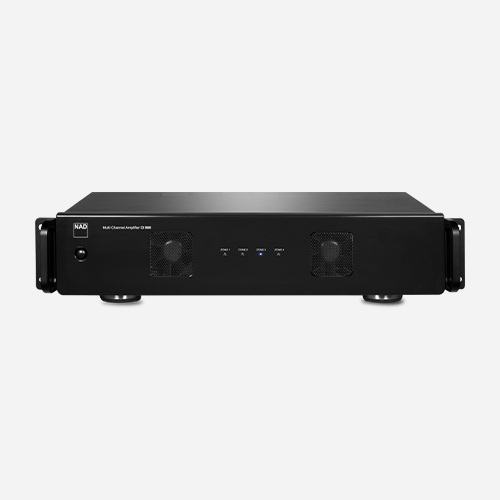In the ever-evolving world of tech, we often find ourselves searching for the latest advancements and the most cutting-edge capabilities. One such innovation that has revolutionized NAD’s approach to home audio is Modular Design Construction, or MDC for short. While many may not be familiar with MDC, its impact on NAD amplifiers and receivers is profound, playing a crucial role in prolonging the longevity of NAD components. Below, we look at the history and capabilities of MDC technology, revealing the perks that await those willing to embrace this forward-thinking approach.
![]()
AM 200, VM 130 & component video board MDC modules
Background to MDC Technology
The origins of MDC date back to a time when technology was advancing at an astonishing pace, around the years 2005 to 2006. Engineers at NAD Electronics, not content with the status quo, embarked on a daring venture. Their mission: to create products constructed with a modular design which would support future updates and enhancements. The genius of this concept lay not only in its benefit to customers but also in the efficiency it brought to manufacturing. Using the same chassis while changing the modules within it was a game-changer. This pioneering spirit has given birth to impressive iterations of NAD products, such as the T 778. Since its initial launch, MDC has continued to evolve and adapt.
![]()
Rear image of T 777
The Power of MDC
The true capability of MDC technology becomes apparent when we consider its potential for upgrading existing audio receivers. Take, for instance, someone who purchased an NAD T 775 in 2007-2008. At that time, it was equipped with HDMI 1.2 and limited audio capabilities. Fast forward to today, and this receiver can be transformed with updates such as HDMI 2.0, Dolby Atmos, DTS, BluOS hi-res streaming, Wifi, Bluetooth, and even Dirac – features that were either unknown or unavailable at the time of purchase. MDC is a testament to NAD’s commitment to supporting and remaining loyal to its customers. This technology covers a wide array of receivers, from AV modules to two-channel modules, capable of adding a multitude of functionalities. Whether you desire streaming capabilities, additional HDMI inputs, or DSD playback, MDC has you covered with its various compatible models.
![]()
BluOS MDC2 module
Birth of MDC2
To further extend the capabilities of its stereo products, the new and more flexible MDC2 platform has been released. MDC2 can process sources (think of a CD player or turntable) connected directly to the amplifier, and not just the signal coming into the module.
In this way, the new MDC2 BluOS-D module brings on the power of BluOS multi-room technology to allow for the creation of a whole-home, distributed audio system. Furthermore, these local sources can be shared with other BluOS players. As an example, imagine listening to the turntable connected to the amplifier in the living room through the BluOS speakers in the study or kitchen, or both at the same time in perfect sync.
The modules currently in production for MDC will remain unchanged, however, a new chapter unfolds with the MDC2 platform, aimed at expanding functionality. Three amplifiers that utilize this platform, namely the C 389, C 399 and C 3050 (and future models) pave the way for the integration of BluOS and Dirac made possible through our latest module innovation; MDC2 BluOS-D. MDC2 BluOS-D brings on the power of BluOS multi-room technology to allow for the creation of a whole-home, network-connected music system where any BluOS-enabled player around the home can be accessed and controlled via the BluOS Controller app. Additionally, MDC2 BluOS-D brings Dirac Room Correction to compatible models, giving them the ability to ensure optimal sound in any listening environment using Dirac’s advanced suite of signal-processing audio tools.
The vision for future amplifiers revolves around MDC2, providing an environmentally conscious alternative to the disposal of obsolete equipment. NAD Electronics remains a trailblazer in its field, with only a select few companies worldwide embracing this modular technology as diligently and effectively.
![]()
T 758 v3i & C 3050
Important Distinctions
While MDC technology offers an array of possibilities, it is essential to make a few critical distinctions. NAD Electronics offers both AV receiver modules and stereo two-channel modules under the MDC umbrella. It is important to note that while ‘MDC’ is a general name for the platform, only a few amplifiers are currently compatible with MDC2, the latest version of the platform.
On another note, AM modules cater to audio needs, while VM modules handle video and digital processing. AM and VM modules are designed specifically for AV receivers, not stereo or 2-channel products. AM/VM modules work in synergy, particularly in products like the T 758, T 778, M17 and many more legacy models, where both audio and video components are essential for a seamless experience.
When contemplating an upgrade or facing the dilemma of outdated audio equipment, consider the environmentally responsible and technologically advanced solution that MDC technology offers. Don’t send your receiver to the landfill; give it a new lease on life and embrace the future of audio with NAD Electronics’ modular approach. MDC technology has been quietly changing the game for years, and its full potential is just beginning to emerge.










